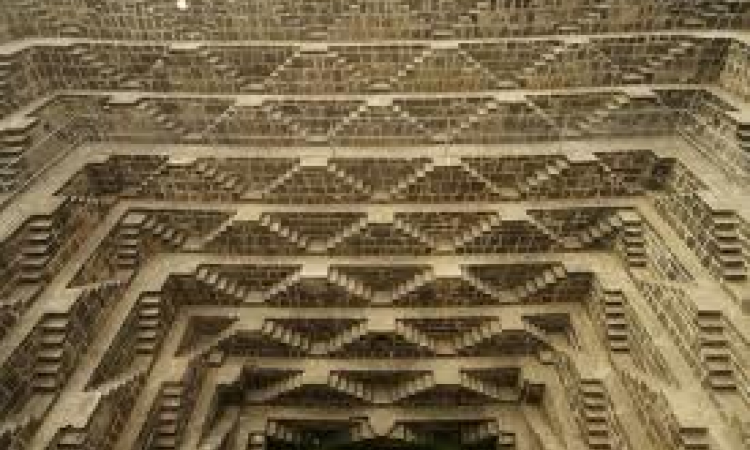
A stepwell or ‘bawdi’ or ‘baori’, is exactly what the name suggests – a well with steps that lead down to the water. About 1000 years ago, a 13-storey deep water reservoir boasting 3500 steps was built to ensure that people in the arid Abhaneri region of Rajasthan had a dependable water source.
This square-shaped architectural marvel built with porous volcanic stones lets water seep in from the bottom and the sides of the well.The geometric patterns of this structure are almost hypnotic in nature. Compact triangles run parallel to the rim along the steep descent of the wall, allowing the water and the steps to shimmer in the sunlight. Box within a box, there is a mesmerising play of triangles on three of the descending walls.
Despite its open architecture that exposes it to the intense heat, the well has its own climate at the bottom. It is about 5-6 degrees cooler than up above even today! Built by King Chanda between the 8th and 9th century, this baori was dedicated to Hashat Mata, Goddess of joy and happiness. It was most likely used as a gathering place for the entire community. That probably explains why the fourth wall has pavilions with sculptures and carvings and a stage that may have featured dances, drama and other forms of performing art.
The Chand Bawdi was simply a sanctuary that bound people together around something they cherished the most – a water source. Although the bawdi is no longer in use, a visit to this marvel which is managed by the Archaeological Survey of India, is a must on your to do list. See it to believe the treasure that it is!
A panormic view of the Chand Bawdi (Source: www.360cities.net)
/articles/step-chand-bawdi-architectural-wonder-rajasthan